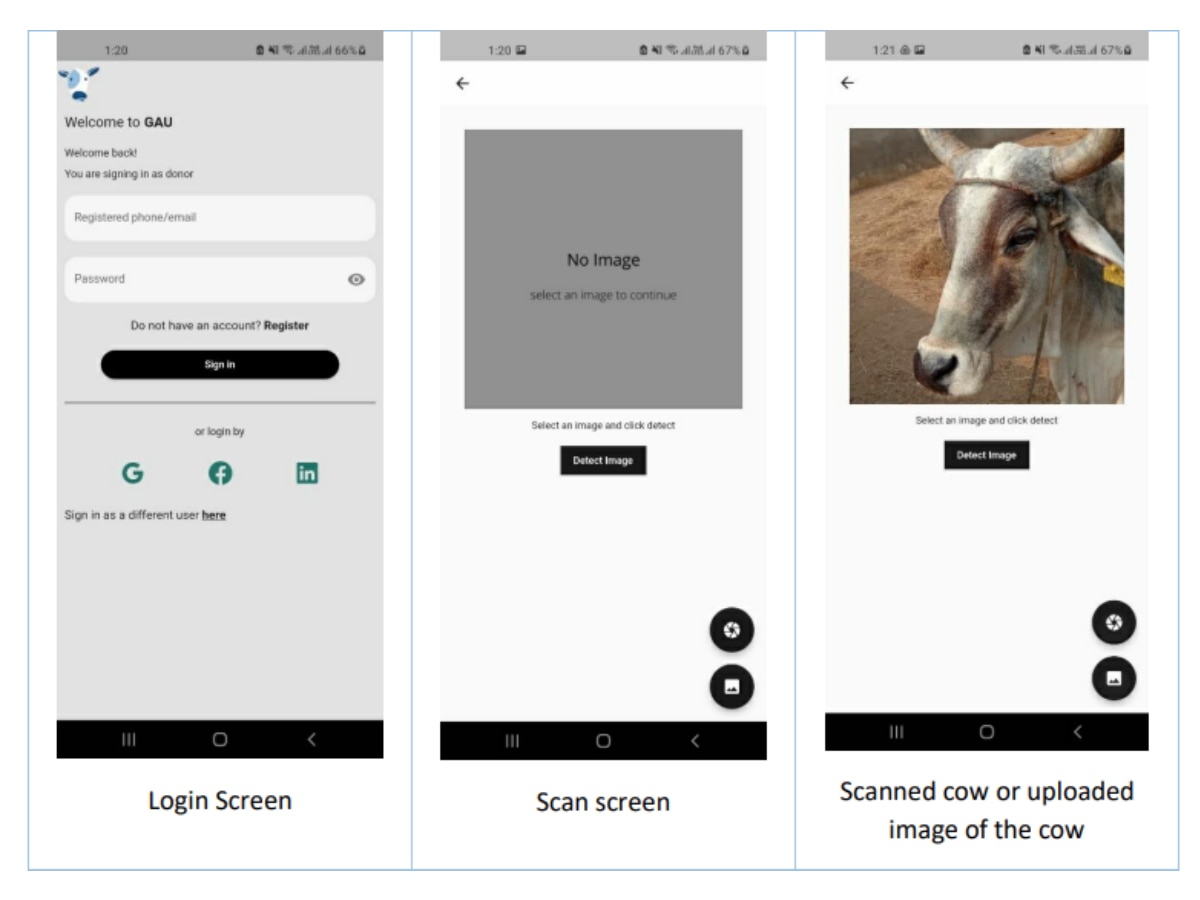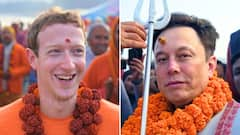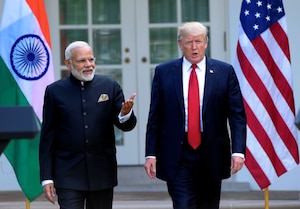Tech-ing Care Of Cows: How Machine Learning, Blockchain Can Help Track Stray Cattle And Modernise Cow-Based Economy
The GAU Vision app can help track stray cows through an innovative facial recognition model.

Cows play a major role in India’s agrarian economy. Apart from being revered by Hindus, cows also help make India the top milk producer in the world, accounting for 23 percent of global milk production. As per data from Invest India, the Indian dairy market is currently valued at around Rs 11.35 lakh crore. However, when cows become non-milching (unable to produce milk), they are either sent to slaughterhouses (in states where that’s allowed) or are simply left to roam streets and fields as impoverished owners find themselves unable to support the cost of fodder and maintenance.
As per the 20th livestock census, released in October 2019, India had around 50 lakh stray cattle, with Rajasthan and Uttar Pradesh leading with 1.27 million and 1.18 million, respectively.
To address this issue, a working paper by IIM Ahmedabad suggests the use of advanced tech to set up a socio-technical-financial system that will take care of non-milching cows. The in-house and proprietary research for this project has been done by TechMachinery Labs, an Indian product-based firm that focusses on track-and-trace, anti-counterfeiting, and process digitisation using advanced tech tools such as machine learning, advanced analytics, computer vision, and others.
What is a cow-based economy?
As per the working paper, titled “Gai Aadharit Unnati (GAU): Modernizing Cow-based Economy through Application of Advanced Technology”, India has predominantly been an agrarian economy “since ancient times”. While cows are revered as they provide food, fertiliser, and medicine in the form of milk, dung, and urine, bulls are used for vital work such as cart pulling, crushing mills for oil extraction, and others.
So cow-based economy can be defined as the process of drawing benefits from “the basic definition of dairy, i.e., milk (including milk-derived products) plus GAUDhan (products from dung and urine) plus GAUSeva (taking care of cows),” said Gaurav Kedia, co-founder, TechMachinery Labs, an IIT alumnus and IIM guest faculty who is also a co-author of the paper.
Why should one bother about stray cows?
Before we get into the study, it’s important to understand why such a project is necessary at all.
As per the IIMA paper, stray cows pose a threat to themselves as well as humans as they often cause grievous road accidents. On top of that, stray cattle would at times raid farming fields, leading to valuable crop damage.
However, the working paper proposes a circular economy model “that helps in the upliftment of stray cows while also creating employment and boosting the economy through cow-dung and urine-based products.”
The paper notes that cow dung from two animals can produce enough biogas to cook three meals a day for a four-member family (two adults, two children). Biogas can help reduce India’s dependence on LPG, 26.3 million metric tonnes of which was consumed in the country in 2019-20. “India has the potential to save at least $55 billion foreign exchange outgo every year, if 50 percent of the potential of biogas is realised,” the study noted. So, if a sufficient number of cows are gathered, a compressed biogas plant can be installed with relative ease.
This is where tracking stray cows and taking care of them plays a major role, as per the study.
How can machine learning help track cows?
For those unaware, machine learning is a field of study that uses artificial intelligence to help computers, or software, learn to more accurately predict results without the need of explicit programming to do so.
The paper suggests the development of an AI-based model which involves machine learning-aided facial recognition technology to help donors track their donations for non-milching stray cows in real-time, while also ensuring good care of them through partnering gaushalas (established cowsheds) and NGOs. This is intended to develop a self-sustainable cow-based economy.
For the project, TechMachinery Labs has created machine learning models to help recognise a cow’s face from a live cow or a photo of the cow. This works similar to how facial recognition functions for human faces, but with a slight twist.
“Human facial recognition functions by gauging the distances between features like lips and eyebrows. On the other hand, the animal is recognised based on patterns and shapes on cows' faces and skins,” said TechMachinery Labs co-founder Nishant Krishna, an inventor and innovator who is a US patent holder as well as an expert in machine learning, blockchain, IoT, architecture, and security. Krishna is also a co-author of the paper.
Now, animals don’t really have a “face” — primarily because their eyes are mostly placed on the sides, and not at the front like humans. However, considering the side placement of eyes, cows can have two or three profiles that can be considered faces.

Challenges of cow digitsation
There are certain challenges when it comes to digitising the face of a cow. Krishna explained, “For human faces, features like forehead height and nose length can be used, but animals don't have such features that are standard across all breeds, some cows have horns, and some don't.”
While the patterns on an animal’s face do provide an advantage for facial recognition at times, some cows have a single colour, without patterns, “which makes it difficult to differentiate and pick out features,” Krishna added.
Using a combination of convolutional neural network (CNN) and machine learning models, as well as in-house research on top of other models and research such as Resnet, Mobile NET, and SSD, TechMachinery Labs has developed a facial recognition technology for indigenous cattle breeds.
The facial recognition tech is implemented via a mobile app, called GAU Vision app. Through the app — available only on Android as of now — all you need to do is take a photo or a video of a stray cow, and it will throw up results for matching cow faces with a minimum accuracy level of 92 percent.
How does blockchain come into play?
Blockchain is a digital ledger that keeps a log of all transactions done on a network. The biggest advantage of blockchain is that once an entry has been logged in, its details cannot be altered by anyone, ensuring the safekeeping of records.
Although at a nascent stage presently, the GAU project looks to use blockchains such as Ethereum, Cardano, government chains, private chains, and other proprietary chains to establish a solid security and governance model.
GAU will also introduce non-fungible tokens (NFTs) on its platform, to help showcase artwork by creators via a secured monetisation model. These NFTs will be beautiful sketches and paintings of stray cows at the gaushalas.
Who are the donors? Is the GAU Vision app rolled out publicly?
As per Kedia, anyone can be a donor. “Every user on the GAU platform is a potential donor,” he said, adding that the project is concentrating on individual donors at the beginning. “The institutional donors will then follow in the future. We are starting with IITs, IIMs, and other approachable groups that are enthusiastic about the idea.”
Donors can use the GAU Vision app to check cow profiles, see bovine details, check details of donations done so far, and also launch the GAU portal to donate through a payment gateway.
As per Krishna, the app is fully developed and ready to use. “We are in the validation and restricted-trials stage,” he said. The app currently works with a maximum of 10,000 cows as of now. “We are further developing the app to ensure that digitisation is not an issue even with millions of cows. It will be released in the current financial year itself.”
What does GAU bring to the cow-economy table?
“GAU is not doing anything new, but getting the aim of a cow-based economy in a unique or tech-based manner is something we are doing differently,” said Kedia. “The core remains the facial recognition of cows, and the GAU model was developed in order to bring 100 percent transparency to the system.”
TechMachinery Labs believes that their model will allow others to develop their own ideas and integrate them with the GAU vision. The team is also looking to incorporate an AI-based health-scanning feature, that will recognise the health status of a cow simply by scanning them through the app. Kedia hopes that will make the model more appealing.
The project will also make its GAU decentalised service mesh available to other organisations in the social impact sector, so that they can build their own apps on top of the existing frameworks using standard APIs.
Related Video
Apple creates a new record in iPhone sales after launch of iPhone 16 | ABP Paisa Live








































